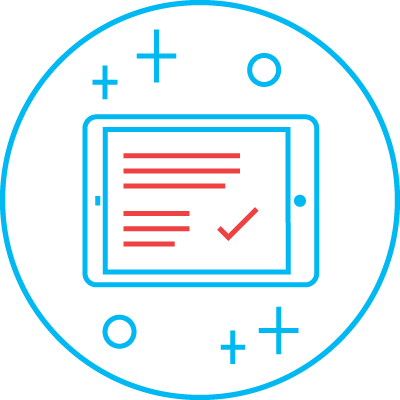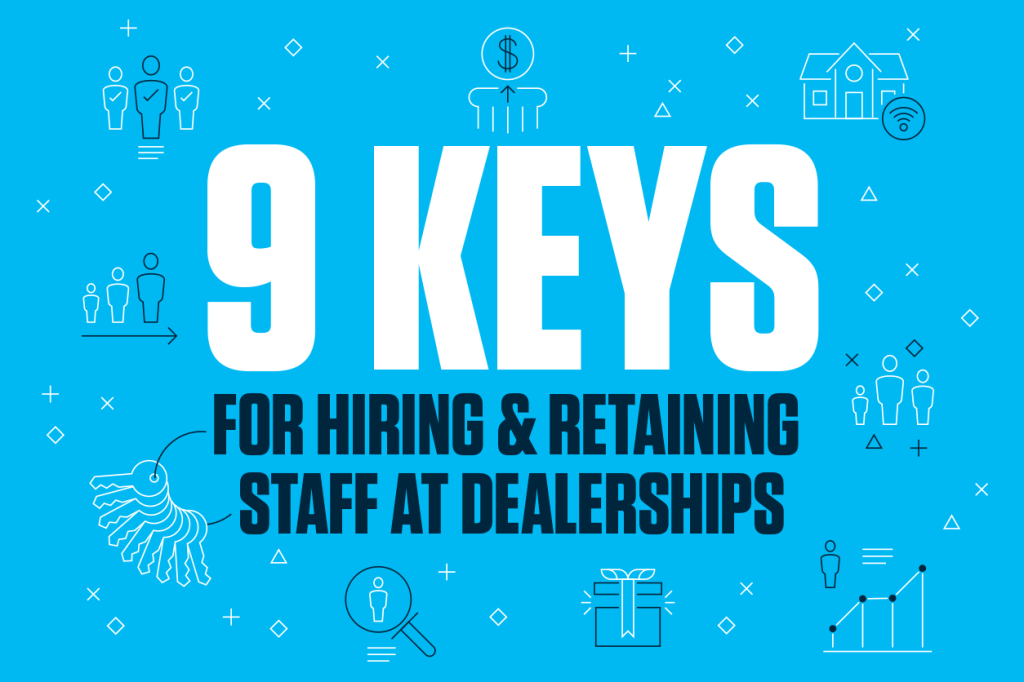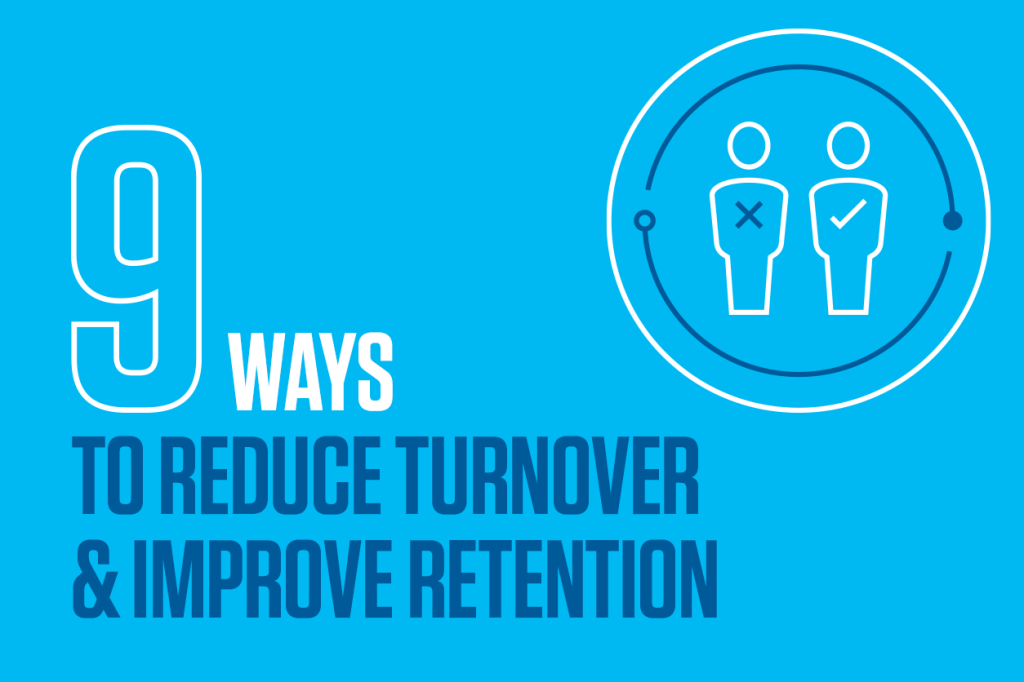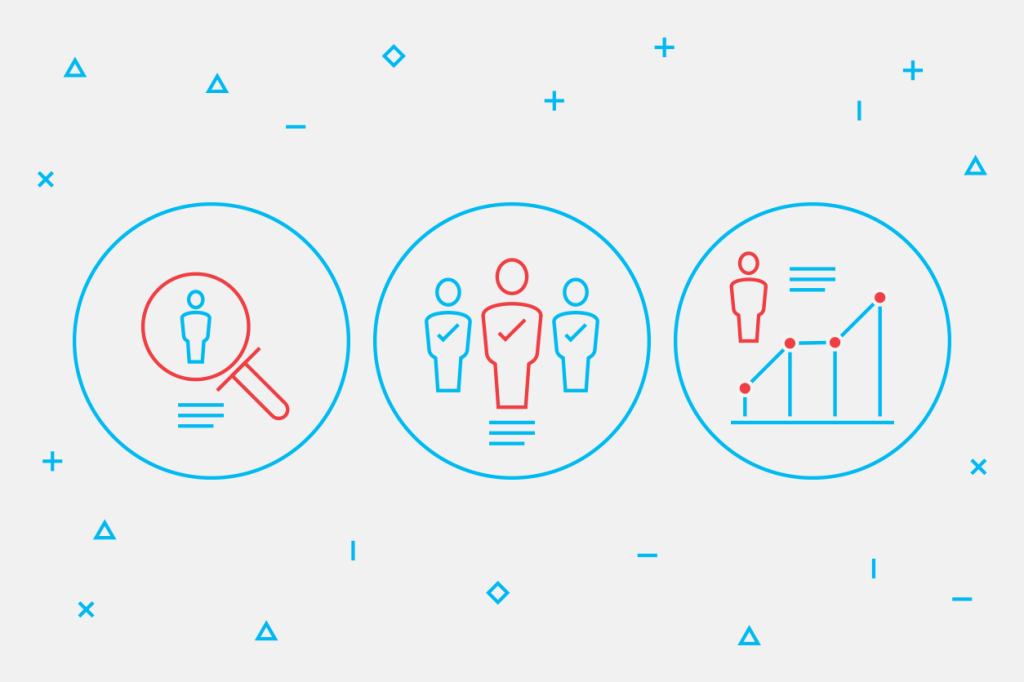Finding and keeping top talent in automotive retail has always been a challenge. But dealers can do more to think outside the box and find those best suited to grow with their companies and, most importantly, improve the return on their hiring investment. Here are 9 steps for hiring and retaining talent at your dealership.
 1. Track Employee Statistics
1. Track Employee Statistics
Employee turnover at dealerships is a huge problem, but most don’t recognize the severity of the situation. Turnover is costing dealers billions of dollars every year. And, according to a NADA Dealership Workforce Study, dealerships drastically underreport their average turnover rate at just 22%. That’s more than half the actual dealership turnover rate identified by NADA, which is 46% for employees and a shocking 80% for salespeople. This discrepancy between perception and reality can be remedied by tracking employment and turnover metrics over time. This involves listing, defining, explaining, and tracking relevant metrics, including voluntary and involuntary turnover and retention rate by department.
 2. Offer Better Compensation
2. Offer Better Compensation
In 2020, the average annual pay for a car salesperson in the United States was less than $41,000. Although this figure appears much higher in 2023, some sources show this figure swinging wildly in the opposite direction. This unpredictable compensation model doesn’t bode well for long-term growth or stability. Considering the high cost of turnover—especially in the long run—dealerships face an ongoing staffing challenge due to their current compensation model.
 3. Offer Remote Work Options
3. Offer Remote Work Options
More and more employees, both inside or outside the auto industry, have started to see the benefits of working from home. And, many won’t go back to an all-in-office situation anytime soon. Today’s employees expect greater flexibility moving forward, even from dealerships. Coincidentally, there has been a parallel trend toward remote car shopping and online car buying. Dealerships should take advantage of this trend to align their staff and HR structures to adopt an omni-channel approach to sales—giving customers the option to buy cars in person, remotely, or a mix of both. This also calls for creating new positions for remote and mobile sales people, which has the added benefit of attracting top talent.
 4. Consider Different Compensation Structures
4. Consider Different Compensation Structures
In addition to increasing compensation amount, dealerships should consider a separate compensation structure altogether, including a move away from traditional commission-based pay. Some dealerships have already made this move, implementing perks like limiting work weeks to 40 hours and offering 2 days off per week, without reducing wages. The results, in terms of improved employee tenure and job satisfaction, have been immediate and undeniable.

 5. Improve Company Culture
5. Improve Company Culture
According to a Hireology Research Report, nearly 40% of people choose to begin a new job search to find a better culture. To put the importance of company culture into perspective, just 36.5% of people listed better pay as the reason for starting a job search. Dealerships should implement more employee recognition efforts and do more to engage their employees, giving them more opportunities to think, grow, and feel valued for their contributions. Improved employee engagement, better emotional connection with work, and more efficient work hours are undeniably interconnected. It’s a win-win for employees and dealerships.
 6. Provide Better Technology
6. Provide Better Technology
Young workers, who grew up with technology, are naturally interested in the latest tech advancements. They view workplace technology as an important perk and understand that the right technologies can make their work easier and more interesting. Implementing integrated technologies that make your employees’ jobs easier and more efficient is a major step toward attracting and retaining top talent. These technologies speed up workflows, remove friction and barriers, and allow employees to focus on what they do best. Plus, integrated technologies appeal to today’s employees and improve your overall brand perception, because, like it or not, your dealership’s brand is inseparably tied to your technology.
 7. Improve Employee Onboarding
7. Improve Employee Onboarding
Employees become most productive after three years on the job. Unfortunately, the average employee tenure is just 18 months to 2.4 years. In order for your dealership to keep employees (especially top employees) longer and reap the rewards of your investment in them, you have to give them a strong start. That means implementing productive, structured onboarding that focuses on employee retention. According to Hireology’s Adam Robinson, there’s a “strong correlation between structured onboarding processes and employee retention. When new hires take part in a structured onboarding process, 66% of them are likely to remain with a company for longer than three years.”
 8. Make Smart Human Resources Partnerships
8. Make Smart Human Resources Partnerships
Ironically, most “human” resources departments are too often tied up in mundane number crunching and accounting work, which takes them away from the day-to-day progress and well-being of actual employees. Outsourcing HR management and utilizing better payroll and HR technology allows your team to shift focus back to your employees, resolving their concerns and ensuring happy productive workers.
 9. Adopt More Diverse Hiring Practices
9. Adopt More Diverse Hiring Practices
Unfortunately, there aren’t as many avenues for women and minorities to explore careers in the auto sales industry. Of course, many of these candidates are among the top, sought- after talent that dealerships should be seeking to employ. When dealerships expand their hiring practices and think outside the boundaries of the typical dealership employee (who often bring baggage of bad industry habits), they have a greater likelihood of finding and keeping the best people for the job.
Finding and keeping top talent is a challenge, but following these 9 steps can give you a leg up in competing for (and keeping) these employees and give you the tools, technology and know-how to improve your return on your talent investment.
To learn more about how your dealership can attract and retain better talent, download our free guide, 9 Ways to Reduce Turnover & Improve Retention.

















 Chelsea is a content strategist at Hireology. She moved to Chicago from Texas in 2017, and has since worked in content creation roles at other SaaS companies with the intention of creating thoughtful, industry leading materials. Chelsea attended Texas State University with a major in Journalism and a minor in English.
Chelsea is a content strategist at Hireology. She moved to Chicago from Texas in 2017, and has since worked in content creation roles at other SaaS companies with the intention of creating thoughtful, industry leading materials. Chelsea attended Texas State University with a major in Journalism and a minor in English.